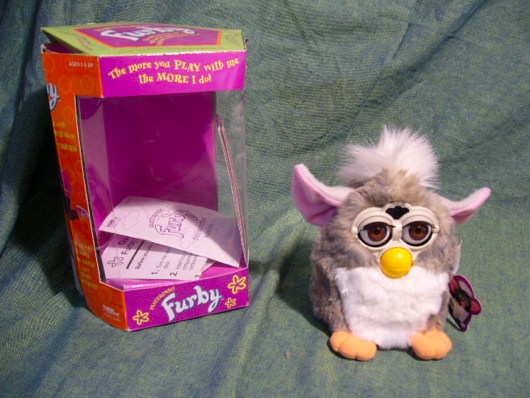Botworld
I want to step back in time, to the first successful domestic robot.
This is Furby, and it was launched in 1998.
It’s a toy – a plush owl with aesthetics that frankly creep me out, now I look back from the safety of this side of the millennium – and it had the illusion of intelligence. A simple artificial intelligence.
So let me run down Furby’s feature list, so you can see what this owl can do:
- Furby has sensors for day and night, tummy tickles, back rubs, noises, and motion. No buttons. To wake Furby up, you pick it up. Also Furbys can move to express emotion with their faces, and a little with their bodies.
- Furby speaks a special language called Furbish: For example, a Furby says good morning by saying – let me try this – “Da a-loh u-tye” which means “Big light up.”
- Furby gradually switches from Furbish to English over four stages of development. There’s a simple kind of reinforcement learning: if you pet a Furby while it says a new phrase, it will say that phrase more often. So Furby learns.
- And finally, Furbys communicate with other Furbys, via an infrared port located between the eyes. Put several together and they’ll dance and chatter.
There’s so much going on here. Furby’s language of interaction is human and physical — light and movement, not buttons and screens. It responds to the environment. It develops. It learns and can be taught. It communicates with humans and its own kind. It doesn’t do anything of these things in a hugely sophisticated way, but it does everything just enough to provide a brilliant illusion of intelligence.
And Furby was crazy popular. It sold 40 million units in its first three years.
There’s a kind bare minimum you need to make something feel intelligence, even if it’s just in a fractional, only puppy-smart way, and I think Furby got there first.
There’s something that happens to your relationship with an object once that threshold is crossed, and I think that threshold is so important that I differentiate it by saying “robot” instead of product or toy.
A robot is something we believe has a mind. Artificial intelligence.
Let me tell you what effect it has, believing something has a mind, emotionally.
[Image credit: Furby by kafta4prez]
